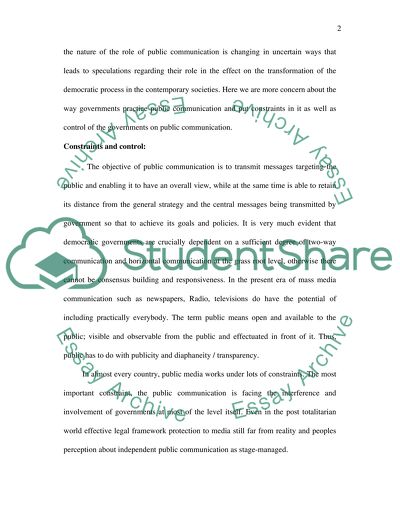Cite this document
(“Public communication Essay Example | Topics and Well Written Essays - 2250 words”, n.d.)
Retrieved from https://studentshare.org/journalism-communication/1512036-government-communication
Retrieved from https://studentshare.org/journalism-communication/1512036-government-communication
(Public Communication Essay Example | Topics and Well Written Essays - 2250 Words)
https://studentshare.org/journalism-communication/1512036-government-communication.
https://studentshare.org/journalism-communication/1512036-government-communication.
“Public Communication Essay Example | Topics and Well Written Essays - 2250 Words”, n.d. https://studentshare.org/journalism-communication/1512036-government-communication.


